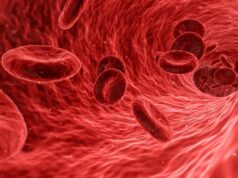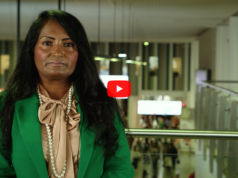
Data from a new study, BASKET-SAVAGE, indicate that patients who receive a drug-eluting stent when undergoing percutaneous coronary intervention (PCI) in a saphenous venous graft have a significantly lower rate of major adverse cardiac events (MACE) at three years than saphenous venous graft PCI patients who receive a bare metal stent. BASKET-SAVAGE was presented at the 2016 European Society of Cardiology (ESC) congress (27–31 August) during the same hot line session Rome, Italy) as NORSTENT, which showed no difference in long-term mortality between bare metal stents and drug-eluting stents in native vessel PCI.
Presenting the results of BASKET-SAVAGE at the ESC congress, Raban V Jeger (Cardiology, University Hospital Basel, Basel, Switzerland) reported that drug-eluting stents have “proven safety and efficacy” for saphenous vein graft PCI up to one year but added that studies have suggested that long-term mortality is increased with drug-eluting stents, compared with bare metal stents.
Therefore, the aim of the study was to assess the safety and efficacy of drug-eluting stents vs. bare metal stents in patients undergoing saphenous vein graft PCI. He explained as poor outcomes of saphenous vein graft PCI may be due to “peripheral emoblisation of friable material and high incidence of restenosis and atherosclerotic disease progression”, use of a distal protection device and GP IIb/IIIa inhibitors were “strongly recommended” for all patients.
Although the enrolment target was 240 patients, the study was terminated early because of slow enrolment; therefore, only 173 patients were enrolled. Of these, 84 were randomised to receive a bare metal stent (Liberte, Boston Scientific) and 89 were randomised to receive a paclitaxel-eluting stent (Taxus Liberte, Boston Scientific). Commenting that these were stents that “were not available anymore in most countries”, Jeger explained that Taxus Liberte was the only drug-eluting stent “allowed for the treatment of very large vessels” when the study began. He added that the primary endpoint was the rate of major adverse cardiovascular events (MACE) at 12 months and secondary endpoints were definite/probable stent thrombosis, major bleeding, long-term follow-up (24, 36, 60 months).
At one year, the MACE rate—according to Jeger—was “almost 80% higher” with bare metal stents 17.9% vs. 2.3% for bare metal stents (p<0.001). The result was similar at three years: 29.8% for bare metal stents vs. 12.4% (p=0.0012). This result was mainly driven by the significantly lower rate of target vessel revascularisation with drug-eluting stents at one year (0% vs. 11.9% for bare metal stents; p<0.001) and at three years (4.5% vs. 19.1%, respectively; p<0.001). Non-fatal myocardial infarction was also significantly lower with drug-eluting stents at one year: 2.3% vs. 11.9% (p=0.025) but not at three years. However, similar to the results of NORSTENT, there was no significant difference in long-term rate of cardiac death between stent groups: 4.5% for drug-eluting stents vs. 3.6% for bare metal stents (p=0.95). There were also no significant differences in the rate of stent thrombosis or in rate of major bleeding between groups.
Addressing the early termination of the study, Jeger noted that BASKET-SAVAGE was still the longest term outcome trial of saphenous vein graft PCI comparing drug-eluting stents vs. bare metal stents ever performed and the “significance of endpoint results was achieved”. He added: “The combination of distal protection devices and GP IIb/IIIa-inhibitors may have been important, but this specific contribution cannot be analysed separately. In addition, the difference that was achieved by older stents might be even larger with contemporary devices.”
Concluding his presentation, Jeger commented that the findings of BASKET-SAVAGE for drug-eluting stents were similar to those for native vessel PCI (using a drug-eluting stent) and that they showed “persistent efficacy and safety of drug-eluting stents vs. bare metal stents in saphenous vein graft PCI up to three years with no increased risk of morality”.
Jeger told Cardiovascular News: “In contrast to NORSTENT where mostly native coronary arteries were treated, BASKET-SAVAGE was performed in a population with saphenous venous graft lesions that had a totally different pathophysiology and a high incidence of major adverse clinical endpoints. Therefore, the findings of the two studies cannot be compared.”













